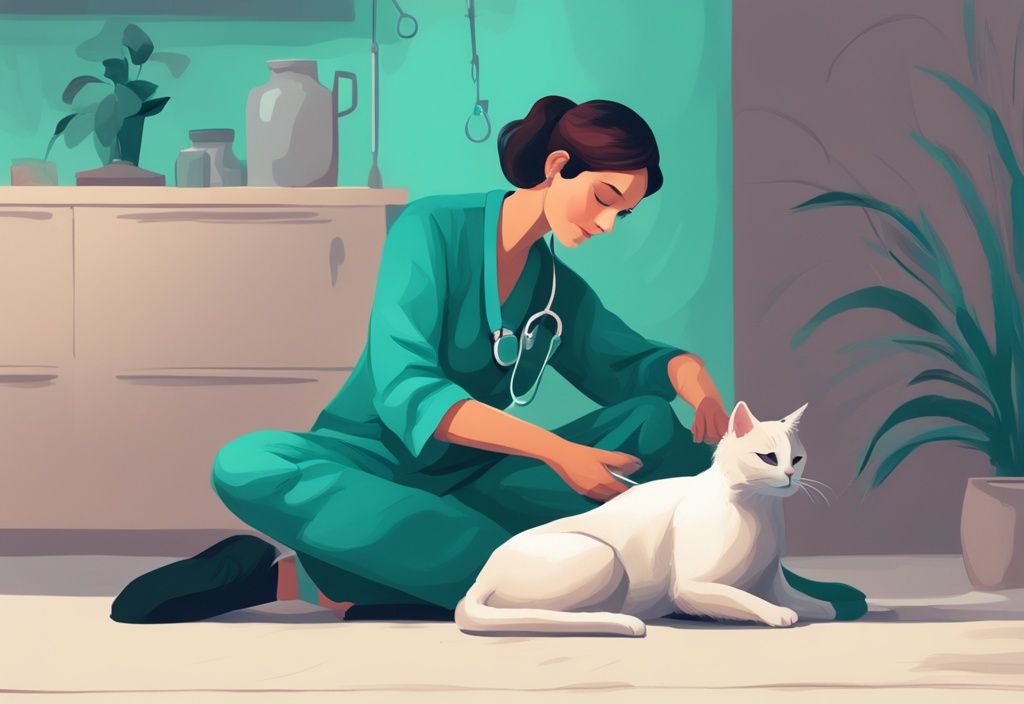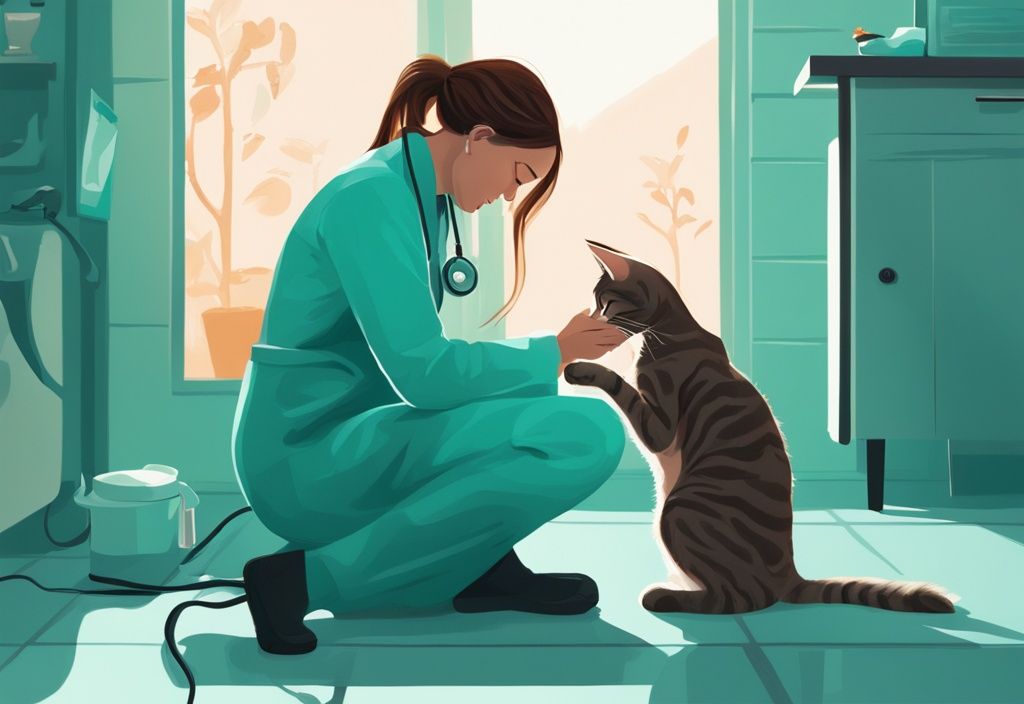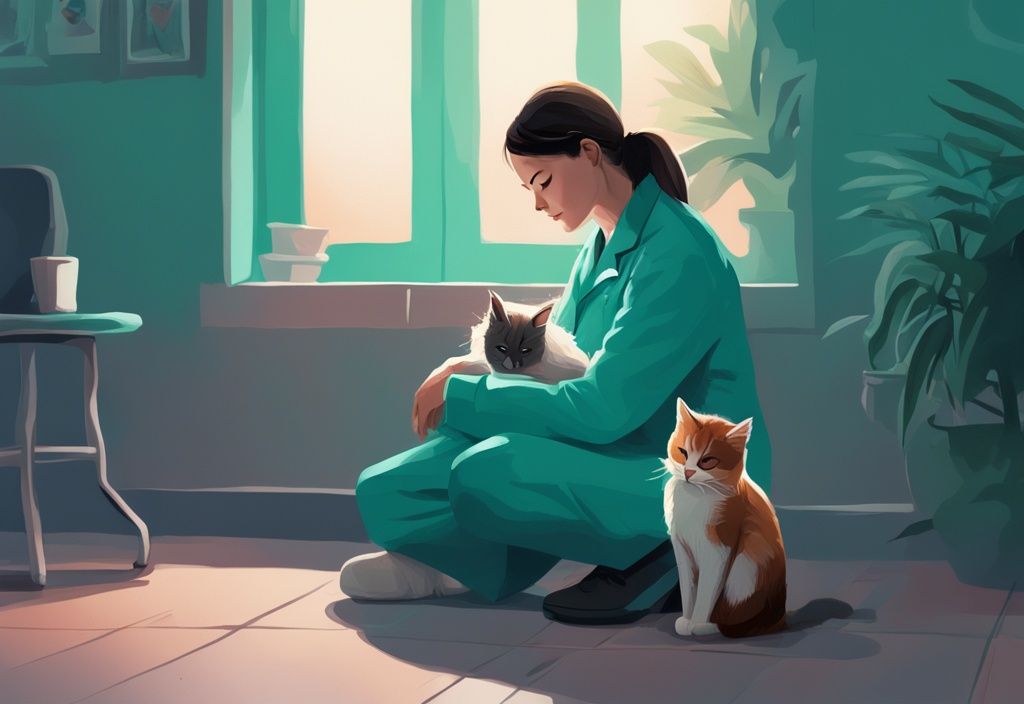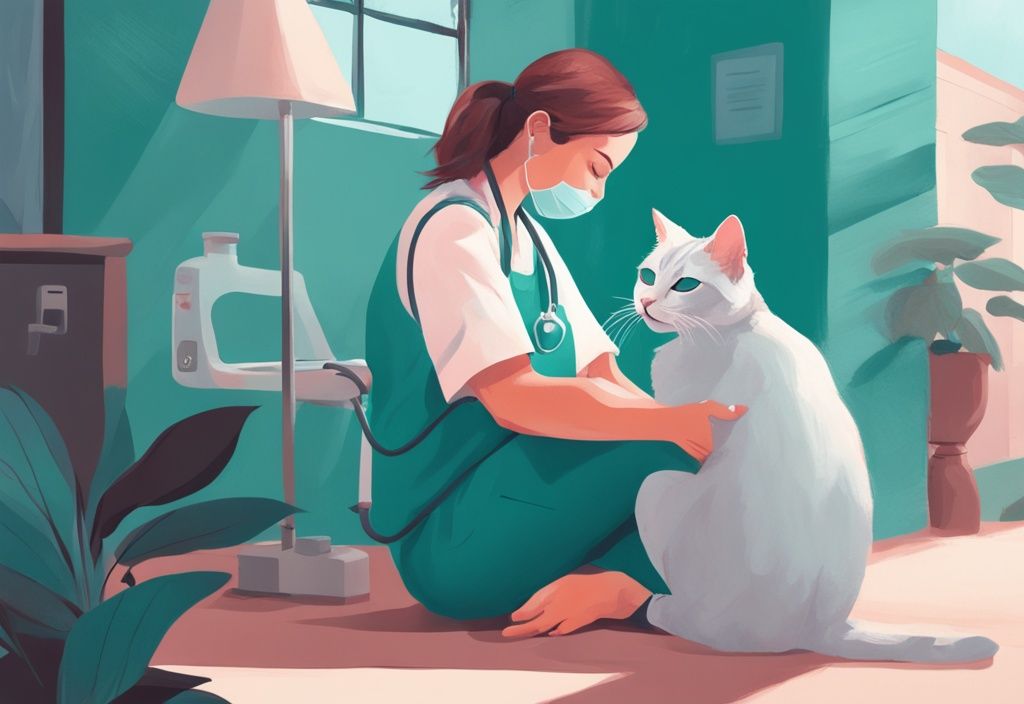Oh, the bittersweet journey of saying goodbye to our feline friends! As a pet lover, I know firsthand how challenging it can be to recognize when it’s time to let go. Cats, much like my Whiskers, have a knack for hiding their discomfort. But fret not! This guide is here to help you spot those subtle signs of suffering and navigate the tough decisions with love and care. Together, we’ll ensure your cat’s final moments are as peaceful as a gentle purr. Ready to dive in?
Recognizing When It’s Time: Signs Your Cat is Suffering
Ever wonder if your feline friend is trying to tell you something? Cats are masters of disguise when it comes to hiding discomfort. But there are subtle signs that can help you understand when they might be suffering. Let’s dive into the clues that could indicate it’s time to have a heart-to-heart with your vet about how to put a cat to sleep.
Physical Symptoms Indicating Poor Quality of Life
Cats, much like us, can face a dip in their quality of life due to health woes. One big giveaway? A sudden lack of interest in food. If your kitty’s skipping meals or losing weight, it might be time to investigate. Other red flags include vomiting, diarrhea, or any abrupt weight shifts. And breathing issues? Those definitely need a quick vet visit.
Keep an eye on your cat’s posture. If Whiskers is lounging in strange positions, it might mean discomfort. And if your usually quiet cat suddenly turns into a chatterbox, it could be a cry for help. Disorientation or confusion, coupled with unusual bathroom habits, like missing the litter box, are also signs of trouble. Mobility problems, like struggling to walk or climb, along with restlessness, can further hint that your cat’s quality of life is slipping.
Behavioral Changes That May Signal Distress
Cats aren’t just about purrs and play; their behavior speaks volumes. If your furry buddy starts dodging family time or getting grumpy, it might be a signal of discomfort. Cats that hide away are often waving a little white flag, saying, “I’m not feeling great.”
Notice a drop in their favorite activities, like chasing toys or exploring? That’s another clue. And if your cat’s snoozing more than Max, my Border Collie, it might be time to pay attention. These behavioral shifts, paired with physical symptoms, can help you decide if it’s time to consult your vet about how to put a cat to sleep.
Consulting with Professionals: The Role of Veterinarians
When you’re faced with the heart-wrenching decision of how to put a cat to sleep, veterinarians are your guiding stars. They bring expertise and compassion to the table, helping you navigate this emotional journey with your furry friend.

Understanding Quality of Life Assessments
Imagine trying to decode your cat’s purrs and meows to gauge their happiness—tricky, right? That’s where vets come in! They perform quality of life assessments, which are like report cards for your cat’s well-being. These assessments include chats about your cat’s daily antics, comfort levels, and overall joy. Vets might even hand you a quality of life questionnaire, a handy tool to track your kitty’s condition over time. These insights help ensure your cat’s comfort and dignity are always front and center.
Discussing Euthanasia: What to Expect
When a cat’s quality of life takes a nosedive due to illness or age, euthanasia might be the kindest option. It’s a tough call, but vets are there to walk you through it with care and clarity. They’ll explain the process, answer your burning questions, and help you feel a bit more at ease. It’s a decision best made with family and friends, always keeping your cat’s best interests at heart. Knowing what to expect can offer a bit of solace during this emotionally heavy time.
The Euthanasia Process: A Detailed Walkthrough
Exploring how to put a cat to sleep involves understanding several key aspects. From the procedure itself to the setting and emotional choices, each step is crucial in ensuring a peaceful farewell for your beloved feline friend.
Understanding the Procedure
When you’re thinking about how to put a cat to sleep, it’s like navigating a gentle path to peace. The euthanasia procedure is designed to be swift and painless, much like a gentle lullaby. A veterinarian administers an overdose of anesthetic, usually in a vein in the front leg. It’s a quick process, leading to unconsciousness and then to a peaceful passing within minutes. Sometimes, your cat might let out a small cry—imagine it as a fleeting sigh of dizziness as the drug takes effect. Remember, any twitching or gasping you see afterward is just reflexive, not signs of life.
Choosing Between Clinic or Home Euthanasia
Deciding where to say goodbye is a biggie. Some folks choose the clinic, while others opt for the cozy comfort of home. If your kitty, like my Whiskers, gets jittery with car rides or vet visits, home euthanasia might be the way to go. Weigh the pros and cons with your vet, so you can choose what feels right for both you and your furry buddy.

Deciding Whether to Stay with Your Cat
Here’s another heart-tugger: do you stay with your cat during the process? Many find comfort in being there, offering a final cuddle or whisper of love. It’s a personal choice, though, and it’s okay to step back if you’re not emotionally ready. Being present can be a profound, even beautiful, experience, but trust your instincts on what feels right for you and your cat.
Aftercare: Handling Your Cat’s Remains
Options for Burial or Cremation
Deciding how to handle your cat’s remains is a deeply personal choice, much like choosing between a cozy blanket or a snazzy new bed for Whiskers. Whether you opt for burial or cremation, each offers a unique way to honor your beloved furball. If you lean towards burial, think about whether a home setting or a pet cemetery feels right. Home burial can be as intimate as a secret cuddle spot, while a pet cemetery provides a more formal farewell. If you’re also considering other aspects of pet care, you might wonder, can you crate train a cat effectively?
Cremation, on the other hand, is like having a flexible travel plan. You can keep the ashes in a cherished urn or scatter them in a meaningful place, perhaps where Whiskers loved to chase butterflies. Chat with your vet or a pet cremation service; they’re like your trusty GPS in this journey, helping you navigate to a decision that feels just right for your family.
Financial Considerations and Planning Ahead
Handling the financial side of euthanasia and aftercare can feel like trying to untangle Max’s favorite chew toy during an emotional time. To ease this burden, consider paying any associated fees upfront. This way, you can focus on the important stuff—grieving and healing—without the distraction of financial worries.
Have a heart-to-heart with your vet or pet cremation service to get a clear picture of the costs involved. They can vary, much like the price of Max’s gourmet dog treats, depending on the services you choose. Planning ahead by setting aside funds is like having a safety net, ensuring that when the time comes, your focus is solely on saying goodbye to your cherished companion.

FAQ
Deciding to put a cat to sleep is a sensitive topic, filled with questions and emotions. Here, we’ll explore some common concerns with a touch of warmth and understanding.
What are the signs that my cat might be suffering?
Oh, our feline friends can be quite mysterious, can’t they? But when Whiskers isn’t feeling well, there are some telltale signs. Look for physical symptoms like a reduced appetite, difficulty breathing, or changes in toilet habits. Behaviorally, they might start avoiding you, become unusually aggressive, or hide away more than usual. It’s like they’re trying to tell us something, isn’t it?
How do I know if it’s the right time to put my cat to sleep?
This is one of those heart-wrenching decisions, isn’t it? It’s crucial to have a chat with your vet, and maybe even your family and friends. Think about what’s best for your furry companion. Quality of life assessments can be a helpful tool to see how your cat is doing over time. When selecting food, it’s important to consider if Sheba is a good cat food option for your pet. Learn more about the nutritional benefits and quality of Sheba cat food. Remember, you’re not alone in this.
What happens during the euthanasia process?
The process is gentle and peaceful. It involves an injection of an anesthetic overdose into a vein, leading to unconsciousness and then, quietly, to death within minutes. It’s painless, though you might hear a small cry due to dizziness. It’s a tender moment, and being there can be a comfort.
Can I be with my cat during the procedure?
Absolutely, you can be right there with your whiskered buddy. This is a deeply personal choice, and many find it comforting to be present. It’s a final act of love and can bring peace to both you and your pet.
What are my options for my cat’s remains?
Afterwards, you have a few choices. Some prefer burial, while others opt for cremation. You might want to keep the ashes or bury them at home. It’s a personal decision, and discussing it with your vet or a pet cremation service can help you find the best option for you and your beloved cat.
